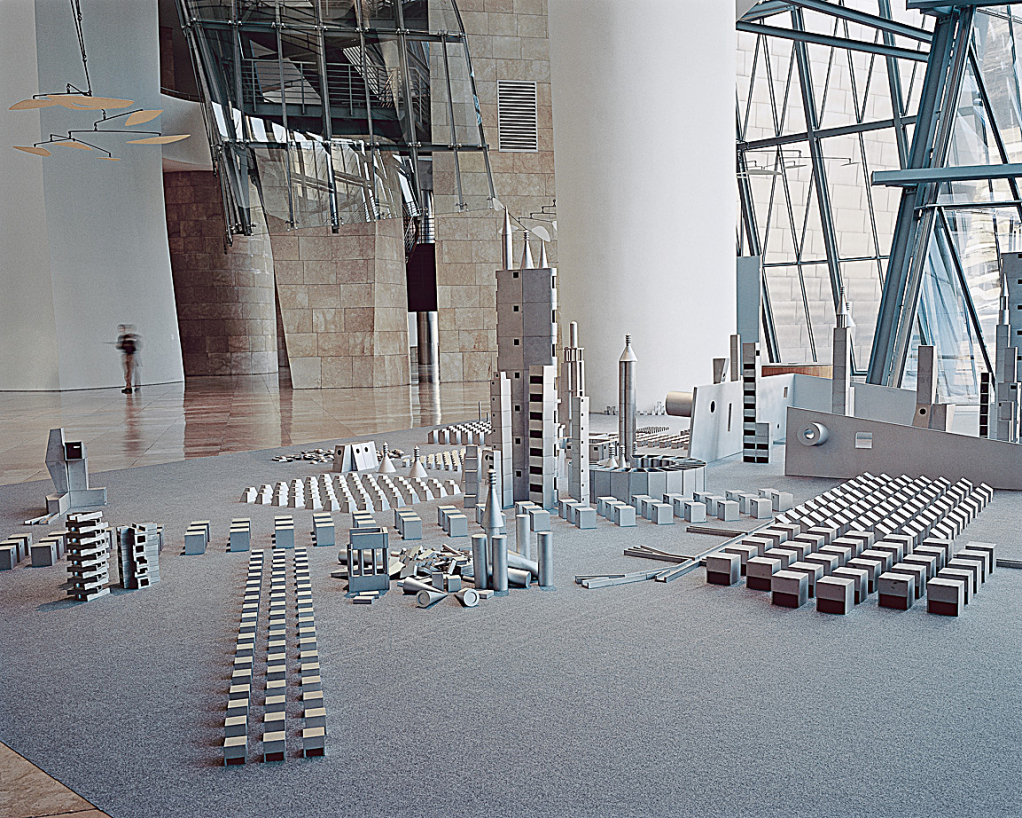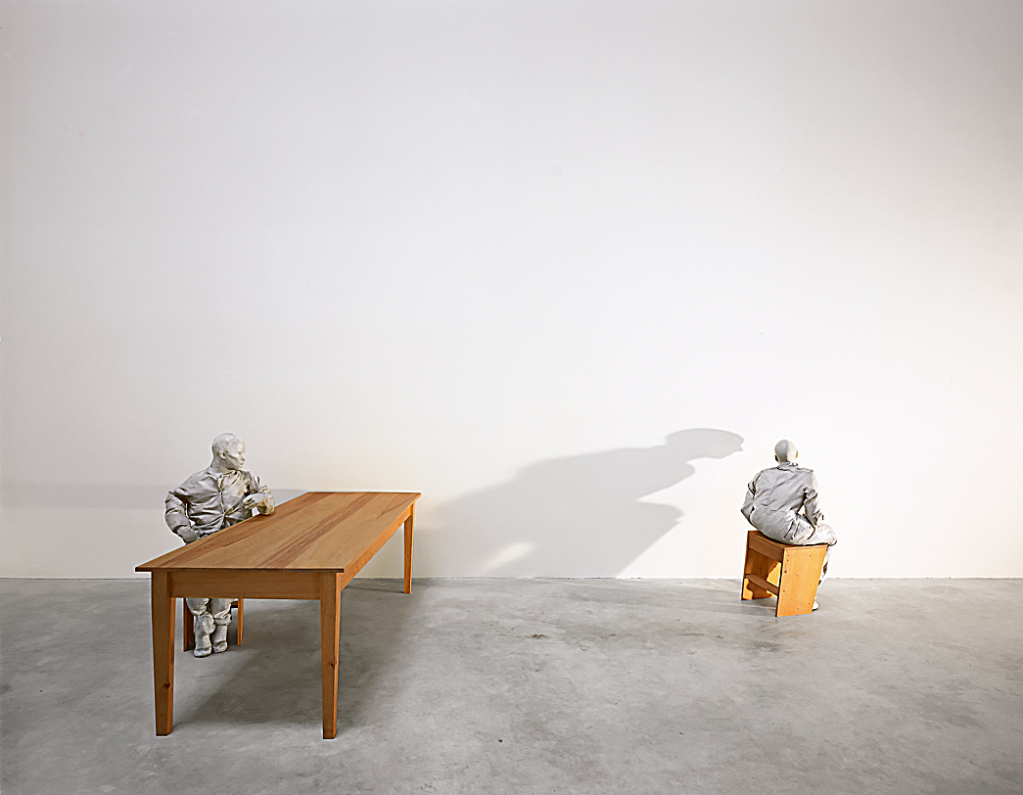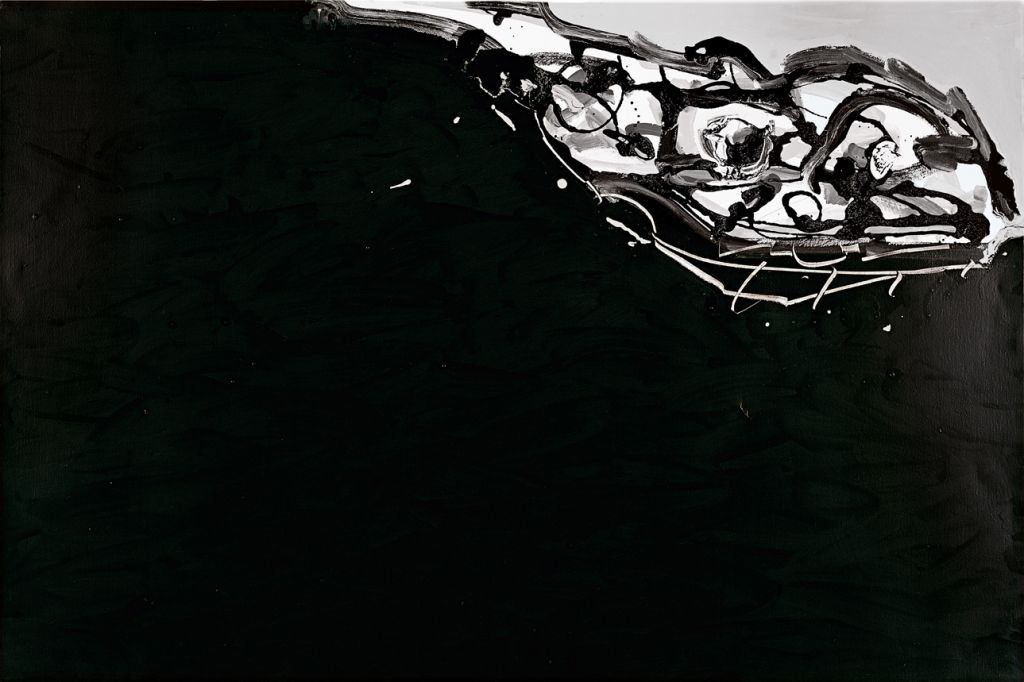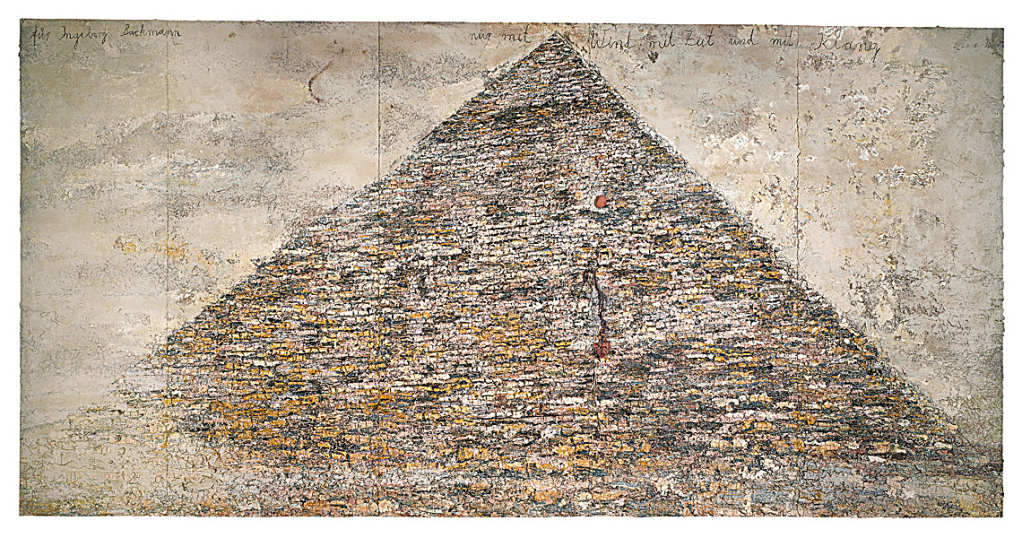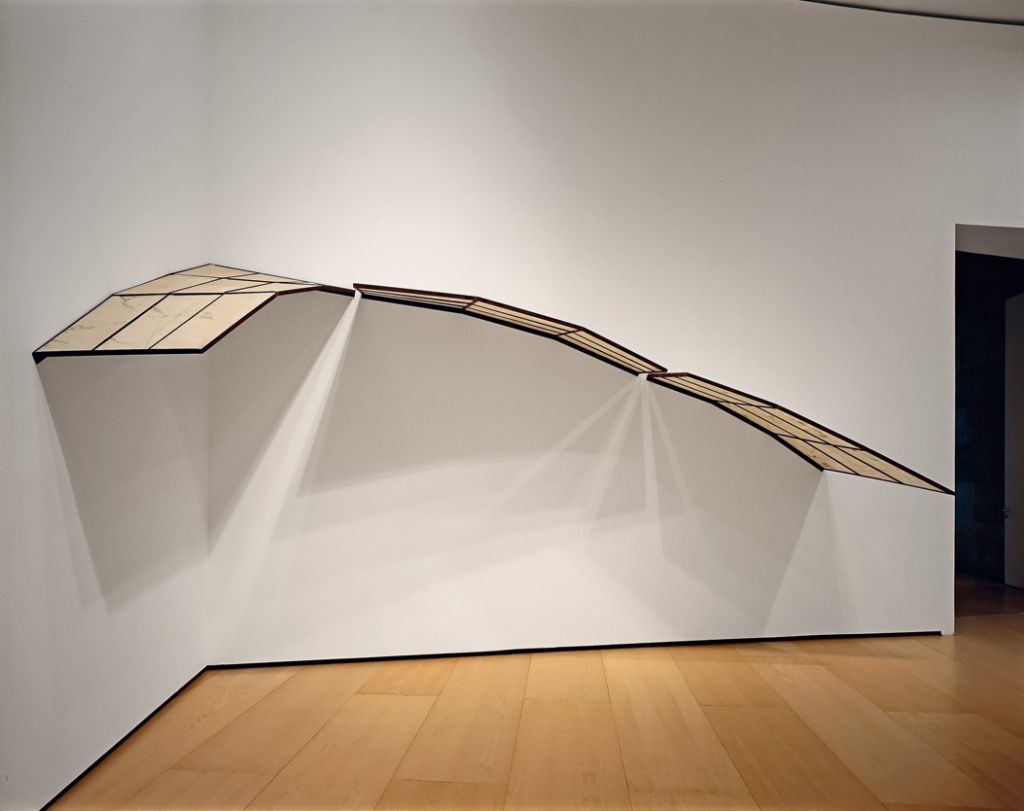Ecstasy, Status, Statue
1994/2022Epoxi resin10 x 420 x 400 cm
Juan Luis Moraza's early works of the 1980s, including those he made during his time in the group Comité de Vigilancia Artística (1979–85) with artist María Luisa Fernández, focused on ornamental elements such as frames and decorations—those aspects of production that high culture tends to relegate to a realm of lesser importance. These creations anticipated the direction of his subsequent investigations into the relationship between high and low culture, and into the masculine and feminine as powerful and contested categories. Like other Basque artists, Moraza was influenced by his encounter in the mid-1980s with the writings of Jacques Derrida, Michel Foucault, and other post-structuralists, who challenged traditional hierarchies and called attention to the ways in which truth, knowledge, and identity are discursively constructed. Moraza gained international recognition in the early to mid-1990s with works questioning notions of gender and installations composed of false "found objects"—sculptures presenting themselves as archeological artifacts, such as the contraceptive items in Archeology of Pleasure (1995).
The installation Ecstasy, Status, Statue (Éxtasis, Status, Estatua, 1994) comprises a multitude of resin casts of the heels of men's and women's shoes. The heels are of varying sizes and shapes, oriented upside down and placed directly on the floor in a grid, reminiscent perhaps of Minimalist sculpture as well as taxonomic displays. Formally seductive, the installation suggests multiple layers of possible meaning. On one level, it reflects Moraza's ongoing inquiry into the pedestal and its role in the definition of the category of sculpture; here the pedestal is subverted, or ironically inverted. The upside-down heels also inevitably conjure the missing bodies to which they belong. In Freudian terms, shoes are prototypical fetish-objects—objects of displaced desire resulting from the male child's shock upon perceiving his mother's sexual difference and his selection of a symbolic substitute. However, Moraza's installation calls into question strict notions of sexual difference: if high and low heels serve as markers for the differentiated territories of masculine and feminine, the great diversity and gradation in the heights of the heels here imply intermediate territories between the two. The work also speaks to Jacques Lacan's notion of desire as a residue, a void, an extreme fragility, or a fracture—the division of the subject into language, or, as in this particular case, the world turned topsy-turvy. Finally, the work challenges the kind of visuality normally associated with sculpture: the heels, close to the floor, do not allow for comfortable observation up close, while a complete view of the work can only be achieved from a more elevated position.
Source(s):
Estrella de Diego. "Juan Luis Moraza." In Guggenheim Museum Bilbao Collection. Bilbao: Guggenheim Museum Bilbao; Madrid: TF Editores, 2009.
Original title
Ecstasy, Status, Statue
Date
1994/2022
Medium/Materials
Epoxi resin
Dimensions
10 x 420 x 400 cm
Credit line
Guggenheim Bilbao Museoa

